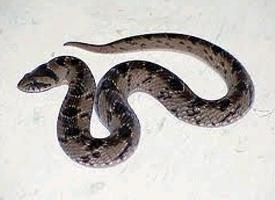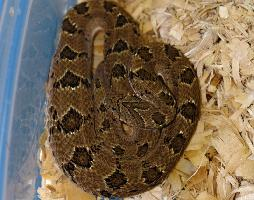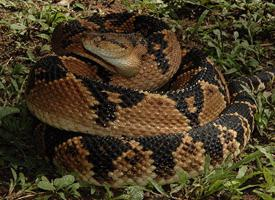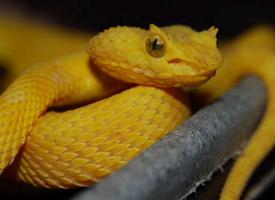
Greutăți și măsuri
| Lungime | de la 30 la 50 cm |
|---|
Descrierea animalului
The Lined Night Adder (Causus bilineatus) is a fascinating species of venomous snake that is part of the Viperidae family, known for its unique appearance and behavior. This species is native to sub-Saharan Africa, where it thrives in a variety of habitats ranging from savannahs to forests, showcasing its adaptability and resilience in different environmental conditions.Adult Lined Night Adders are relatively small to medium-sized snakes, typically reaching lengths of about 60 to 70 centimeters, although some individuals may grow slightly larger. Their bodies are robust and cylindrical, a common trait among vipers, which aids them in their ambush predatory tactics. The head is distinct from the neck, slightly flattened, and covered in scales that are often a blend of colors, enhancing their camouflage in their natural habitat.
The most striking feature of the Lined Night Adder is its coloration and pattern. The snake's background color can vary from shades of brown to grey, over which two distinct, dark, parallel lines run down the length of its back, from the neck to the tip of the tail. This unique patterning is what gives the Lined Night Adder its name and serves as an effective camouflage, breaking up its outline among the leaf litter and undergrowth of its environment. The belly is usually a lighter color, providing a stark contrast to its dorsal patterning.
Lined Night Adders are primarily nocturnal, emerging at night to hunt for their prey. Their diet mainly consists of amphibians, such as frogs and toads, which they locate using their keen sense of smell. They are ambush predators, lying in wait for unsuspecting prey to come within striking distance. Upon locating a target, they deliver a quick, venomous bite. Their venom is hemotoxic, affecting the blood and tissues of their prey, which aids in subduing and digesting their meal. However, their venom is generally considered of low toxicity to humans, causing pain and swelling but rarely leading to severe complications.
Reproduction in Lined Night Adders is oviparous, meaning they lay eggs. Females lay clutches of eggs in the warmer months, which then hatch into fully independent young. These juvenile snakes are precocial, meaning they are born ready to fend for themselves without any parental care, starting their life cycle anew.
Despite their venomous nature, Lined Night Adders are relatively docile and tend to avoid confrontation with humans. They are more likely to flee or remain motionless when encountered, relying on their camouflage to avoid detection. However, like all wild animals, they can become defensive if threatened or cornered, and caution should be exercised around them.
In conclusion, the Lined Night Adder is a remarkable example of adaptation and survival in the wild. Its distinctive appearance, nocturnal habits, and role in controlling amphibian populations make it an integral part of its ecosystem. While venomous, its general reluctance to engage with humans and low venom toxicity make it less of a threat than other viper species. Nevertheless, the Lined Night Adder remains a fascinating subject of study for herpetologists and nature enthusiasts alike.
Animale similare
Fotografii noi cu animale
Top 10 animale
- Dolphin gull (Leucophaeus scoresbii)
- Diana monkey (Cercopithecus diana)
- Moustached guenon (Cercopithecus cephus)
- Greek tortoise (Testudo graeca)
- Stone loach (Barbatula barbatula)
- Galápagos tortoise (Geochelone nigra complex)
- Japanese macaque (Macaca fuscata)
- Russian tortoise (Testudo horsfieldii)
- Common flying dragon (Draco volans)
- Galápagos penguin (Spheniscus mendiculus)


